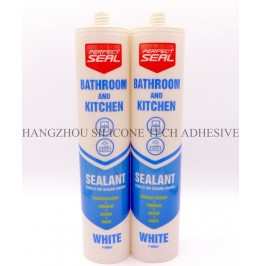Long-Term Protection Measures for Unused Bathroom Sealants
Bathroom sealants play a vital role in preventing water damage, mold growth, and structural issues by creating watertight barriers around fixtures like sinks, showers, and bathtubs. However, when bathrooms are left unused for extended periods, sealants can deteriorate due to environmental factors, lack of maintenance, or chemical exposure. Implementing proactive protection measures ensures these critical components remain intact and functional, even during prolonged inactivity.

Understanding the Risks of Neglecting Unused Sealants
When bathrooms are not in regular use, sealants face unique challenges that can compromise their integrity. Identifying these risks is the first step toward effective preservation.
Environmental Factors
-
Humidity Fluctuations: Even in unused bathrooms, humidity levels can rise due to poor ventilation or external weather conditions. Prolonged exposure to moisture can weaken sealant adhesion, leading to peeling or cracking.
-
Temperature Extremes: Cold drafts or heat from nearby appliances can cause sealants to expand and contract repeatedly, accelerating wear and tear.
-
Dust and Debris Accumulation: Without regular cleaning, dust, dirt, and grime can settle on sealant surfaces, providing a breeding ground for mold or mildew, especially in damp environments.
Chemical Exposure
-
Residual Cleaning Agents: If the bathroom was last cleaned with harsh chemicals, traces of these substances may remain on sealants, slowly degrading their material over time.
-
Airborne Contaminants: Fumes from paints, adhesives, or other household products used nearby can interact with sealants, causing discoloration or chemical reactions.
-
Hard Water Stains: Mineral deposits from unfiltered water can build up on sealants, making them brittle or prone to cracking if left untreated.
Physical Stress
-
Lack of Flexibility: Sealants rely on slight movement to maintain their bond. In unused bathrooms, reduced flexibility due to prolonged stillness can lead to adhesion failure.
-
Mechanical Damage: Accidental bumps or impacts from moving objects, even during infrequent use, can chip or crack sealants if they’ve already weakened.
Preparing the Bathroom for Long-Term Inactivity
Taking specific steps before leaving a bathroom unused for months or years can significantly extend the lifespan of sealants.
Thorough Cleaning and Drying
-
Remove Existing Mold or Mildew: Scrub all sealant surfaces with a mild, non-abrasive cleaner to eliminate any visible mold or mildew. Avoid bleach-based products, as they can leave residues that harm sealants over time.
-
Dry the Area Completely: Use towels, fans, or dehumidifiers to ensure the bathroom is entirely dry before closure. Moisture trapped behind fixtures or within sealant crevices can cause damage during storage.
-
Clean Surrounding Surfaces: Wipe down tiles, countertops, and fixtures to prevent dust or grime from transferring onto sealants during inactivity.
Applying a Protective Barrier
-
Temporary Sealant Covers: Consider using removable silicone or plastic covers designed to shield sealant joints from dust and moisture. These can be easily installed and taken off when the bathroom is back in use.
-
Vapor Barrier Installation: In extremely humid climates, placing a vapor barrier, such as plastic sheeting, over the entire bathroom (excluding fixtures) can help control moisture levels.
-
Anti-Mold Sprays: Lightly mist sealant surfaces with a non-corrosive anti-mold solution to inhibit fungal growth during prolonged inactivity. Ensure the product is safe for the specific sealant material.
Ventilation and Climate Control
-
Maintain Airflow: If possible, leave a window slightly open or install a ventilation fan set to a low, continuous setting to prevent stagnant air and humidity buildup.
-
Use Dehumidifiers: Place a portable dehumidifier in the bathroom to regulate moisture levels, especially in basements or areas prone to dampness.
-
Temperature Regulation: Set the thermostat to a moderate, consistent temperature to minimize thermal stress on sealants, avoiding extreme cold or heat.
Monitoring and Maintaining Unused Sealants Over Time
Even in unused bathrooms, periodic checks and minor upkeep can prevent minor issues from becoming major problems.
Regular Inspections
-
Visual Checks: Every few months, inspect sealant joints for signs of cracking, peeling, or discoloration. Pay close attention to corners and edges, where stress is most likely to occur.
-
Touch Tests: Gently press on sealant surfaces to assess their firmness. Soft or spongy areas may indicate water infiltration or adhesion loss.
-
Smell Tests: Detect musty odors, which often signal hidden mold growth behind or beneath sealants, even if no visible signs are present.
Addressing Minor Issues Promptly
-
Cleaning Small Mold Spots: If minor mold appears, clean it immediately with a damp cloth and a mild, pH-neutral cleaner. Avoid scrubbing aggressively, as this can damage the sealant.
-
Reapplying Protective Coatings: If anti-mold sprays or temporary covers have worn off, reapply them according to the product’s instructions to maintain protection.
-
Adjusting Ventilation Settings: If humidity levels rise despite initial precautions, increase fan speed or dehumidifier usage to restore optimal conditions.
Preparing for Reactivation of the Bathroom
When the bathroom is set to be used again, take these steps to ensure sealants are ready for regular exposure to water and cleaning agents.
-
Final Cleaning: Thoroughly clean the bathroom, including sealant surfaces, to remove any dust or protective coatings applied during inactivity.
-
Testing Water Tightness: Run water around fixtures and check for leaks or seepage at sealant joints. Repair any damaged areas before full use.
-
Re-Evaluating Sealant Condition: If sealants show significant wear, consider reapplying a fresh layer to ensure long-term protection against daily use.
By understanding the risks, preparing properly, and maintaining unused bathroom sealants over time, property owners can avoid costly repairs and ensure these critical components remain effective for years to come, even during extended periods of inactivity.
Prev: The aging speed of bathroom sealants when in contact with hot water
Next: Chemical disinfection compatibility of sealant after application
